Goodwin Sands 'treasure trove' Dutch shipwreck excavated
- Published
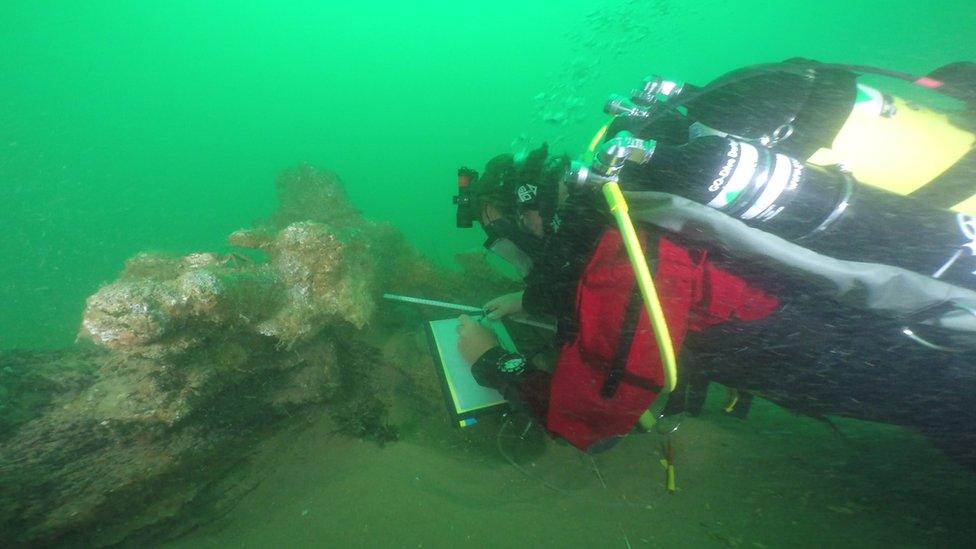
A diver making drawings of the wreck of the Rooswijk in 2016
A ship excavation is expected to reveal a "treasure trove" of items and stories from Europe's global trading history.
An international team of maritime archaeologists are diving, excavating and recording the wreck of Dutch ship the Rooswijk off the Kent coast.
All 300 shipmen died when the vessel, carrying coins and silver ingots, sank on Goodwin Sands in January 1740.
Never before have any of the Dutch East India Company's 250 wrecks been scientifically excavated on this scale.
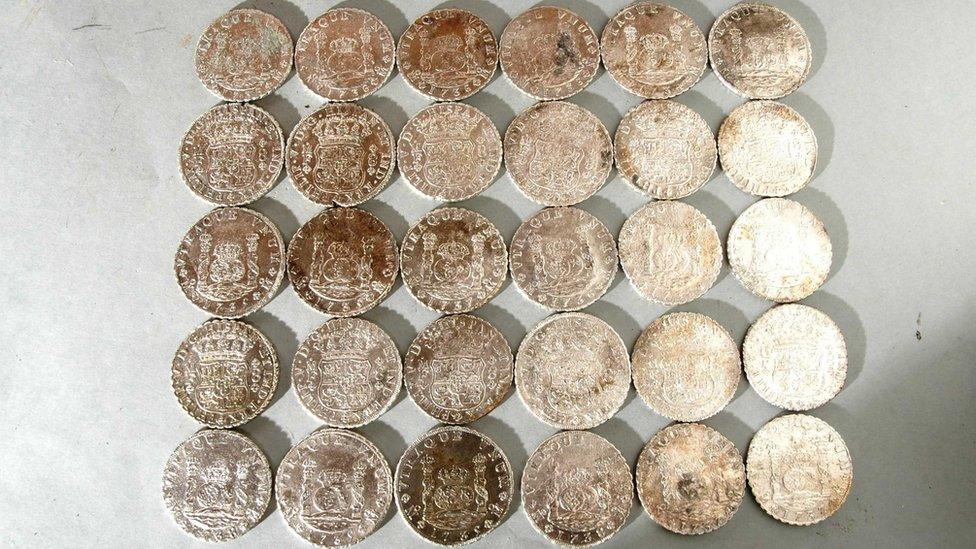
Spanish coins found in the wreck
Historic England animation of the Rooswijk sinking
Historic England manages the protected site and is working with the Dutch government, which owns the ship's remains.
It is only now, after more than 250 years, that the sands have shifted enough to unveil the wreckage.
Some explorations were carried out last year and those finds are being showcased as part of the #Rooswijk1740 project, led and financed by the Cultural Heritage Agency of the Netherlands, with open days in Ramsgate between 19 August and 16 September.
They include a large seaman's chest, pewter jugs, ornately carved wooden knife handles and leather shoes.

An international team of maritime archaeologists are diving, excavating and recording the wreck
The current mission will see archaeologists delve further into the storage rooms and living quarters in the stern of the ship.
Martijn Manders, project leader of the Rooswijk Excavation and Maritime Heritage programme manager at the Cultural Heritage Agency of the Netherlands, said: "The Goodwin Sands has been a treacherous place for ships throughout the centuries and is now a treasure trove for archaeologists.
"The rapidly shifting sands mean that the site is even more exposed now than it was during our initial dives to assess the condition of the Rooswijk last year. This makes the excavation urgent."
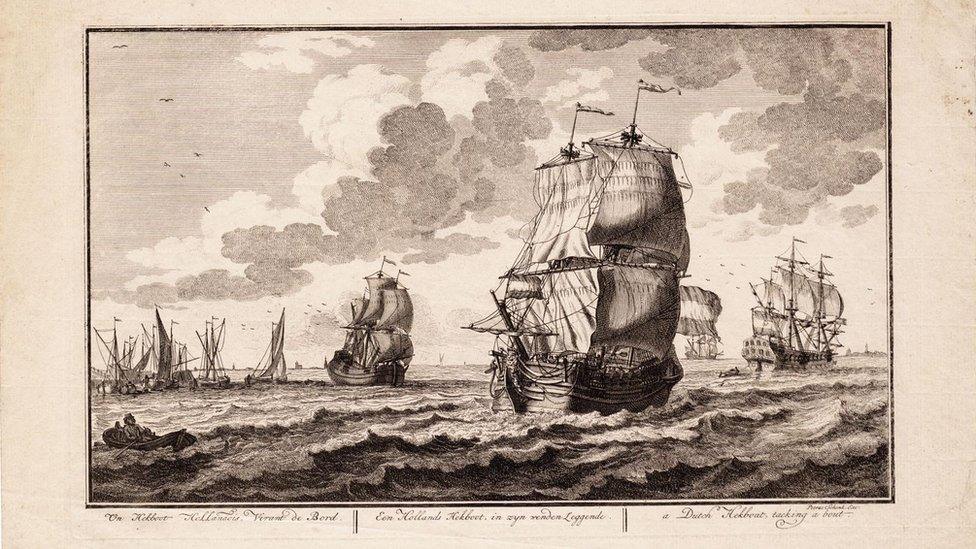
A drawing of a ship similar to the Rooswijk - a Dutch ‘hekboot’ by Adolf van der Laan in 1716.
The wreck is high on the Heritage at Risk register due to its exposed remains and vulnerability to the shifting sands.
Alison James, maritime archaeologist at Historic England, said: "Wrecks such as the Rooswijk are time capsules that offer a unique glimpse into the past and tell a story.
"We look forward to the fascinating insights and discoveries that the Rooswijk excavation will uncover this summer."

Glasses recovered from the Rooswijk wreck
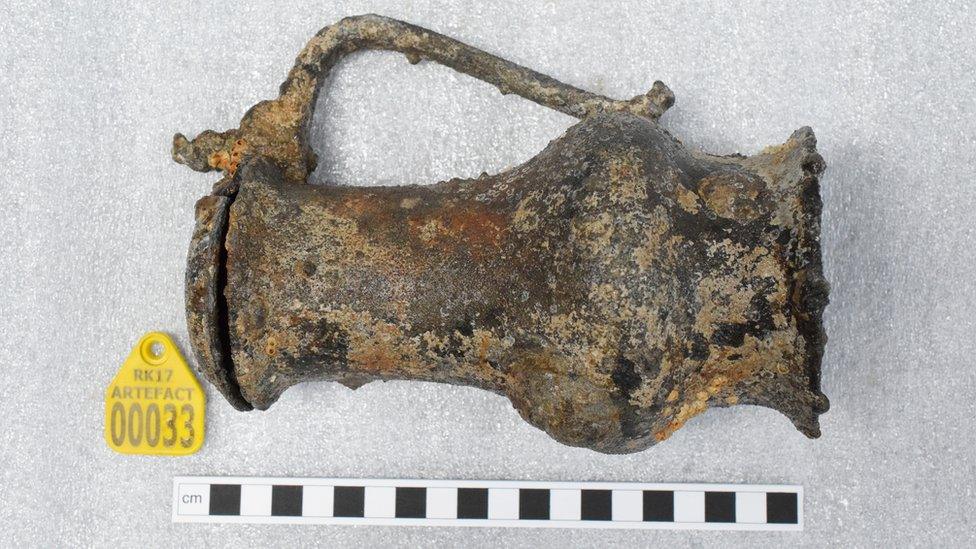
Pewter tankard found in the wreck
- Published18 August 2017
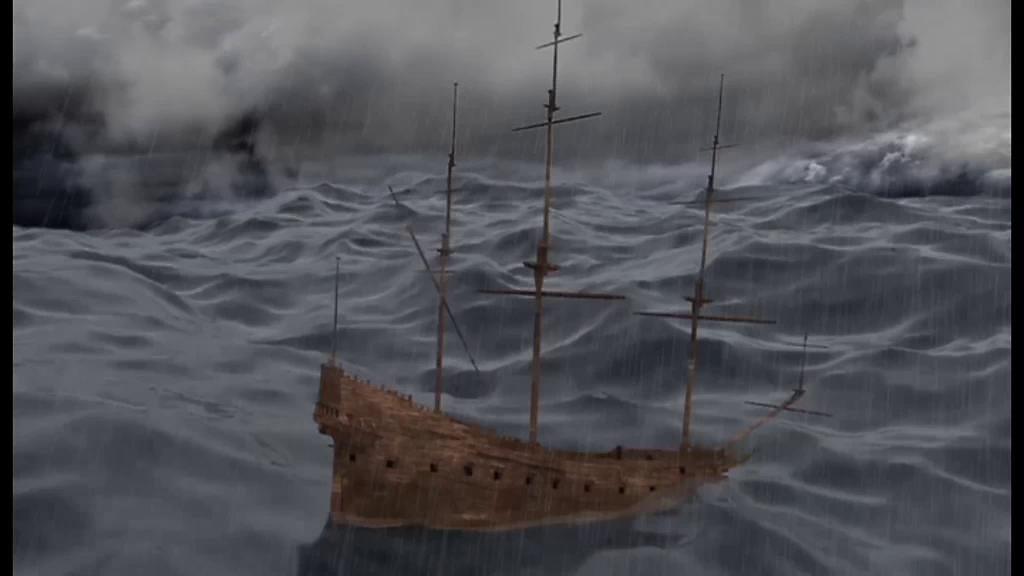
- Published13 September 2016
